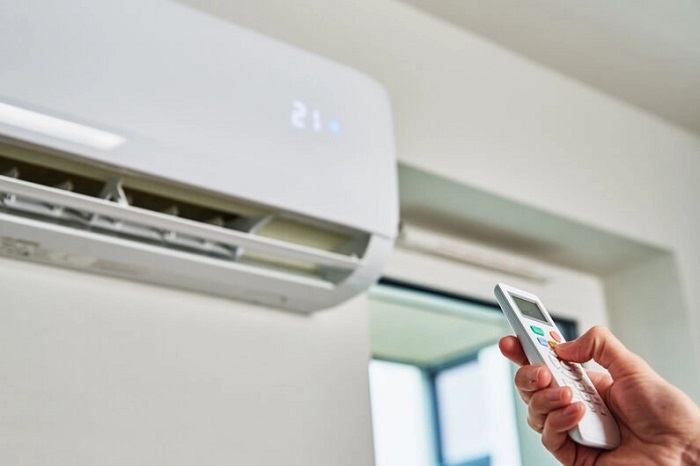Health
Study Explores How Low Humidity Favors Virus Transmission

- Stanford research links indoor humidity levels to seasonality of respiratory illnesses like COVID-19 and flu.
- Higher humidity levels enhance the formation of disinfectant compounds in airborne microdroplets, potentially reducing viral spread.
- Increased ventilation in winter months may decrease indoor humidity, counteracting efforts to control airborne viruses.
- Maintaining indoor humidity levels at 40% to 60% alongside ventilation could be crucial in combating viral transmission.
New Stanford research adds to evidence that the seasonality of respiratory illnesses, like COVID-19 or the flu, can be linked to indoor humidity levels. The study, which found that ventilation reduces the presence of naturally occurring disinfectant compounds in airborne microdroplets, could add another dimension to public health approaches to seasonal viruses.
In reaction to the threat of COVID-19 and other viral, airborne respiratory infections, experts have recommended increased ventilation in hospitals, nursing homes, schools, and other public buildings. However, new research from Stanford University suggests that excess ventilation can reduce relative humidity in a way that could counteract public health interventions targeting airborne viral infections. This work may help explain why, in many regions of the world, more people tend to get sick with airborne viruses in winter, when heating systems dry out indoor air.
“Indoor relative humidity of 40% to 60% has long been recommended by experts, and now this research points to a significant benefit: humidity in this range naturally creates anti-viral compounds in the air’s microdroplets,” said Richard Zare, the Marguerite Blake Wilbur Professor in Natural Science and a professor of chemistry in the Stanford School of Humanities and Sciences. Zare is the senior author of a paper about this work, published March 11 in Proceedings of the National Academy of Sciences. “This could lead to controlling indoor relative humidity in a way that could radically alter how we combat airborne viral infections,” Zare added.
Previous research led by Zare revealed that hydrogen peroxide, a common disinfectant, can spontaneously form in water microdroplets. Now, the researchers have discovered that, as humidity increases, so does the concentration of hydrogen peroxide and other naturally occurring disinfectant agents in the air. This new finding suggests that ventilation aimed at preventing the spread of disease – which tends to dry air out – could be counterproductive, and reveals a possible mechanism for the increased number of cases of airborne viruses during the winter months when heating and ventilation are used more often. The study also highlights the possibly beneficial effects of increased humidity for reducing the spread of airborne viruses.
Floating disinfectants
Respiratory illnesses are spread via infected water droplets exhaled when someone coughs, sneezes, or even talks. But water microdroplets might be capable of killing viruses in exhaled droplets, thanks to the abundance of reactive oxygen species, like hydrogen peroxide, on their surfaces.
To better understand this potential, the researchers studied water microdroplets, around 11 microns in diameter, in a humidity-controlled environment. Using nuclear magnetic resonance and other analysis methods, they measured the concentration of hydrogen peroxide at different temperatures, humidity levels, droplet sizes, and atmospheres.
The results showed that when they increased the humidity from 15% to 50%, the concentration of hydrogen peroxide increased by a factor of 3.5. From 50% to 95%, the concentration leveled off. So as humidity increases, so does the concentration of reactive oxygen species and their ability to disinfect.
“When you have low relative humidity, two things happen. One, you do not form these reactive oxygen species as much as you do at higher relative humidity,” said Zare. “Number two, the droplet evaporates much more rapidly, and the virus is quite content to be in a dry state and floating around. It becomes very light, and it doesn’t fall to the ground for a long time.”
Zare is already working on further studies to better understand exactly how reactive species, such as hydrogen peroxide, could reduce the prevalence of viruses in air. But the current results suggest that humidity could be an important factor in controlling the spread of airborne viruses. As of now, however, humidity is not considered in disease control plans or recommendations.
To ventilate, or not to ventilate
The Centers for Disease Control and Prevention recommends that indoor spaces be ventilated enough to meet five “air changes” per hour. Here, one complete air change is defined as all of the air in a given space being pushed out, or an equivalent amount of air being circulated in.
Following his latest study, Zare warns against only focusing on ventilation.
“I’m not against ventilation,” said Zare, “But doing it five times per hour, particularly in the wintertime when the heat is on, means that you’re drying out the air and lowering the relative humidity. We have shown that low relative humidity makes viruses and droplets much more viable and they survive a lot longer.”
In the winter when the heat is turned on, or when a space is being overventilated, Zare suggests using a humidifier to maintain levels around 40% to 60% humidity in addition to ventilating a space.
Looking ahead, Zare is collaborating with Bolei Chen of JiangHan University to test the effects of relative humidity and temperature on the viability of the SARS-CoV-2 virus in water droplets.
Source: Stanford University























































